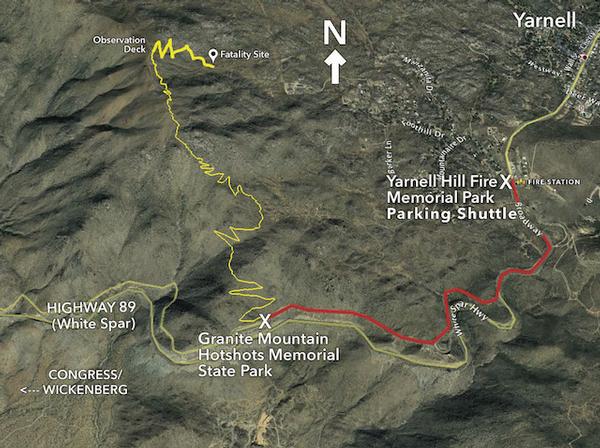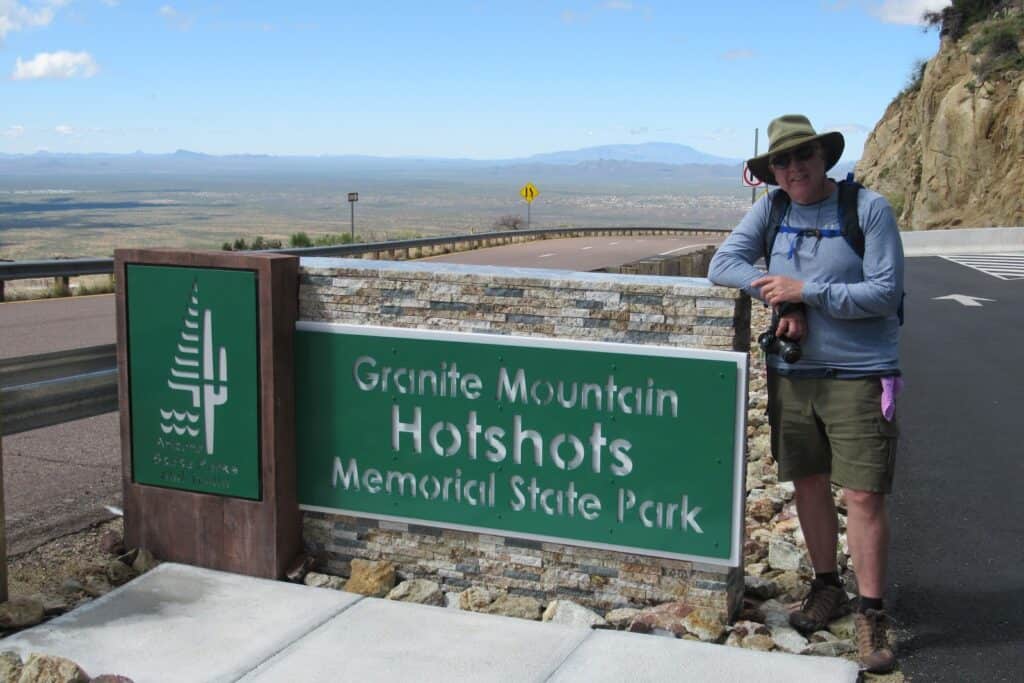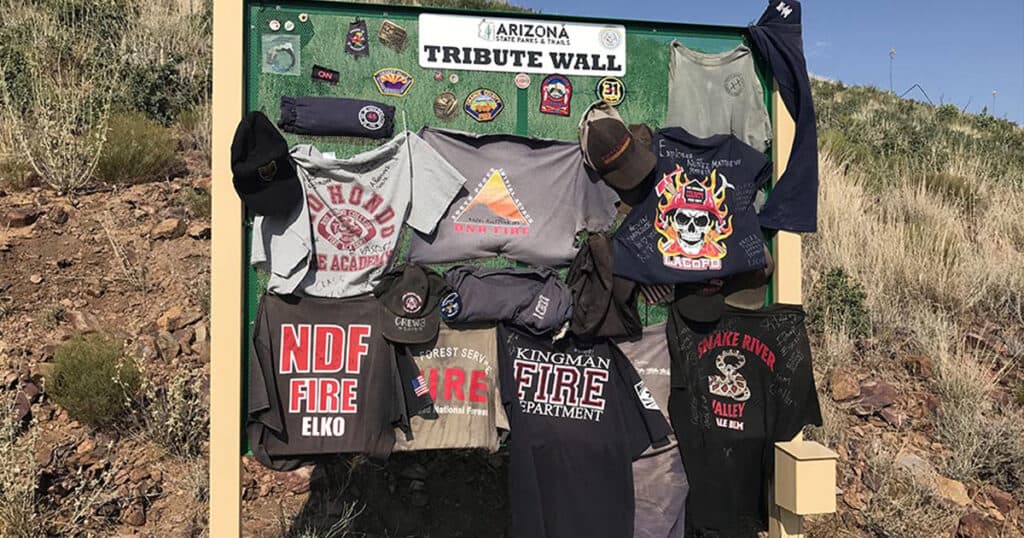Discovering Homolovi State Park: A Journey Through Time and Nature
Homolovi State Park, located just north of Winslow, Arizona, is a captivating destination that offers a unique blend of archaeological significance and natural beauty. This state park, encompassing over 4,000 acres, serves as a gateway to understanding the rich cultural history of the Hopi people and the Ancestral Puebloans who once inhabited the area.
Preservation Focus
Over 300 Ancestral Puebloan archaeological sites
Meaning of Homolovi
Hopi word meaning ‘place of the little hills’
Activities
Features historical exhibits, birdwatching, and hiking
Historical Change
Name changed from Homolovi Ruins State Park in 2011 after Hopi tribe’s request
Facilities
Includes a campground, restrooms with showers, and an RV dump station
Area
4,500 acres

A Glimpse into History
The name Homolovi means “Place of the Little Hills” in the Hopi language, reflecting the park’s connection to the Hopi tribe. The park is home to more than 300 archaeological sites, including the ruins of ancient pueblos built between 1260 and 1400 AD by the ancestors of the Hopi people. These sites offer invaluable insights into the cultural transitions and social changes that occurred in the region during the 13th and 14th centuries.Among the notable sites are Homolovi I and Homolovi II, each containing over 1,000 rooms and numerous ceremonial kivas. Homolovi II, the largest and most excavated site, features interpretive signs and sidewalks for visitors to explore and learn about the ancient inhabitants’ way of life.
Natural Wonders and Wildlife
Situated in the high desert, Homolovi State Park offers a diverse landscape of grasslands and low shrubs, with the Little Colorado River flowing nearby. This environment supports a variety of wildlife, including over 100 bird species such as hawks and golden eagles, as well as mammals like bobcats and prairie dogs. The park’s trails provide opportunities for hiking, birdwatching, and observing petroglyphs along the Tsu’vo trail. Visitors can also enjoy the serene beauty of the desert and its unique flora and fauna.
Visitor Experience and Activities
Homolovi State Park is open year-round, offering a range of facilities and activities for visitors. The Visitor Center Museum provides educational exhibits on the human history and natural environment of the park, along with authentic Hopi artwork for sale. For those interested in stargazing, the park hosts astronomy presentations at its observatory, allowing guests to marvel at the night sky. Camping enthusiasts will find well-equipped campsites with electric hookups and water. The park’s campground includes both back-in and pull-through sites, accommodating large RVs, and offers amenities such as showers and a dump station
picnic amidst the desert landscape, Homolovi State Park promises an unforgettable journey back in time. So, pack your bags, book your adventure, and let history come alive before your eyes at Homolovi State Park.
What are the best hiking trails in Homolovi State Park?
Homolovi State Park offers a variety of hiking trails that cater to different interests, from exploring archaeological sites to enjoying scenic views. Here are some of the best hiking trails in the park:

- Homolovi II Trail: This is a 0.5-mile paved trail that is wheelchair accessible, leading to the largest archaeological site in the park. The trail provides access to the ruins of a pueblo with an estimated 1,200 to 2,000 rooms, offering a glimpse into the life of the ancestors of the present-day Hopi people.
- Tsu’vö Trail: Known as the “Path of the Rattlesnake” in Hopi, this 0.5-mile loop trail is both a nature and archaeological trail. It features desert prairie vegetation, milling stone areas, and petroglyphs, making it a fascinating walk through history and nature.
- Nasungvö Trail: Meaning “Place of Rest” in Hopi, this 1.2-mile trail is a primitive hike across high prairie grasslands. It connects the Visitor Center to the campground area, offering a peaceful and scenic hike.
- Diné Trail: This 1.5-mile trail leads to Diné Point and connects with other trails in the park. It offers a scenic view of the park and is ideal for those looking to explore more of the park’s natural beauty.
- Homolovi I Trail: A 0.5-mile dirt trail that weaves through the remains of a large pueblo, offering insights into the area’s archaeological significance. Visitors are reminded not to remove any artifacts found along the trail.
What activities can I do at Homolovi State Park?
Homolovi State Park offers a variety of activities that cater to history enthusiasts, nature lovers, and outdoor adventurers. Here are some of the activities you can enjoy at the park:
- Archaeological Exploration: The park is home to over 300 Ancestral Puebloan archaeological sites, including the ruins of ancient pueblos such as Homolovi I and Homolovi II. Visitors can explore these sites and learn about the history and culture of the Hopi ancestors who once lived there.
- Hiking: There are several trails within the park that offer opportunities for hiking and exploration. Notable trails include the Homolovi II Trail, which is wheelchair accessible and leads to the largest archaeological site, and the Tsu’vö Trail, which features petroglyphs and milling stone areas.
- Wildlife Viewing: The park is an excellent spot for birdwatching and wildlife observation. Visitors can see a variety of bird species, including hawks, golden eagles, and burrowing owls, as well as mammals like elk, pronghorn, and coyotes.
- Camping: Homolovi State Park offers RV and tent camping facilities, allowing visitors to enjoy the solitude of the high desert setting. The campground includes sites with electric hookups and water, as well as restrooms and showers.
- Visitor Center and Museum: The Homolovi Visitor Center features exhibits that explain the archaeology of the area and display artifacts such as pottery and baskets. The center also offers a gift shop with books and Hopi and Navajo artwork for sale.
- Astronomy: The park hosts astronomy presentations at its observatory, providing a chance to enjoy the night sky and learn about the stars through telescope viewing.
- Picnicking: There are picnic areas with shaded tables throughout the park, perfect for relaxing and enjoying the scenic surroundings.
Can I visit the ancient ruins at Homolovi State Park?
Yes, you can visit the ancient ruins at Homolovi State Park. The park is home to over 300 archaeological sites, including several significant Ancestral Puebloan ruins. Two of the most notable sites open to visitors are Homolovi I and Homolovi II. These sites provide a fascinating glimpse into the lives of the ancestors of the Hopi people who inhabited the area between the 13th and 14th centuries.
- Homolovi I: This site features the remnants of a pueblo and offers visitors a chance to explore the historical significance of the area. It is accessible via a short dirt trail.
- Homolovi II: The largest and most thoroughly excavated site in the park, Homolovi II contains an estimated 1,200 to 2,000 rooms. It is accessible by a paved trail that is wheelchair-friendly, allowing visitors to explore the ruins and learn about the cultural history through interpretive signs.
These sites are accessible via trails that are well-marked and provide educational insights into the ancient cultures that once thrived in this region. The park’s visitor center also offers exhibits and artifacts that further explain the historical context of the ruins.
Which hotel is closest to Homolovi State Park?
The hotel closest to Homolovi State Park is the Quality Inn Winslow I-40. This hotel is conveniently located with easy access off Interstate 40 and is just minutes away from Homolovi State Park.
Are there any hotels near Homolovi State Park with an indoor pool?
If you’re looking for a hotel near Homolovi State Park with an indoor pool, the Best Western Plus Winslow Inn is a great option. Located at the entrance of Homolovi Ruins State Park, this hotel features an indoor pool, along with other amenities such as a daily breakfast buffet, a fitness room, free Wi-Fi, and free parking.
What are the best times of year to visit Homolovi State Park?
The best times of year to visit Homolovi State Park are during the spring and fall months. During these seasons, the weather is generally mild and pleasant, making it ideal for outdoor activities such as hiking and exploring the archaeological sites. Here are some details about the weather and conditions during these times:
- Spring (March to May): Temperatures during spring range from highs of 61°F in March to 79°F in May, with lows ranging from 31°F to 45°F. This period is characterized by relatively mild weather and lower chances of rain, making it a comfortable time for outdoor activities.
- Fall (September to November): In the fall, temperatures range from highs of 84°F in September to 58°F in November, with lows from 53°F to 29°F. The weather is generally stable, with less wind compared to spring, providing excellent conditions for exploring the park’s trails and ruins.
While summer can also be a popular time to visit due to school vacations, it tends to be hotter, with temperatures reaching up to 93°F in July and August, and these months also see the highest precipitation due to monsoon rains. Winter is cooler, with the potential for overcast days and occasional snow, but snow typically melts by mid-morning.



